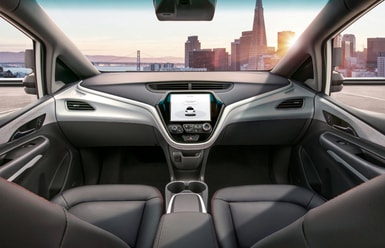Today, thanks to advancements made by some of the world’s most prominent automakers, that fantasy is becoming a reality.
copyright by www.wealthdaily.com
 The driverless car has been a longtime fantasy among an extremely varied group of potential users, from science-fiction aficionados all the way to Jagermeister enthusiasts who dream of a machine that can take them home without the risk of injury or arrest.
The driverless car has been a longtime fantasy among an extremely varied group of potential users, from science-fiction aficionados all the way to Jagermeister enthusiasts who dream of a machine that can take them home without the risk of injury or arrest.
BMW, Mercedes, Ford, Fiat-Chrysler, and, of course, Tesla, among others, have all made major inroads into developing this potentially world-altering product, with several models capable of completely autonomous operation due to be released as early as 2021.
And while most of these offerings allow the conventional human driver the mere option of sitting back and not doing anything, some automakers, such as GM, for example, have gone so far as to promise a car with no steering wheel and no pedals at all, making it a true autonomous vehicle . If all goes according to plan, this heavily retrofitted Chevy Bolt will be entering service with select taxi fleets as early as next year.
To those of you not paying extra-special attention to your calendars, that’s sometime within the next 15 months .
That’s a pretty insane timeline when you think about it. We’ve been living with human-controlled, human-dependent automobiles for more than 110 years now — vehicles where the operator was the only decision maker.
And just like that, inside of the next five financial quarters, all that will start to change.
Thank you for reading this post, don't forget to subscribe to our AI NAVIGATOR!
What most people fail to appreciate, however, is just how much work and complexity goes into achieving anything close to a functional autonomous vehicle.
Consider this: In the chaotic environment of the modern roadway, occasionally accidents will be inevitable, regardless of how many computer-controlled cars are out there.
Tree limbs will fall, pedestrians will step into roadways, water mains will break, and any number of other events that no supercomputer will be able to control will occur, instantly creating situations where contact between vehicles and other objects will be unavoidable.
In such situations, autonomous cars will have to make the same sorts of decisions that human drivers have been making since the very dawn of motorized vehicles: Since I have to crash into something, who or what do I crash into, given my choices?
Hard Decisions
Do I crash into the tree that’s just fallen into my path, or do I swerve and hit the minivan containing a family of five?
Do I hit the pedestrian that just stepped into my path, or do I strike an oncoming bus?
Do I careen headlong into a stopped truck, or do I take my chances with a brick wall?
These are all difficult choices, but they’re choices that will have to be made nonetheless — and choices the vehicle owner and vehicle manufacturer/software designer will have to live with, both morally and legally. […]
read more – copyright by www.wealthdaily.com


Today, thanks to advancements made by some of the world’s most prominent automakers, that fantasy is becoming a reality.
copyright by www.wealthdaily.com
BMW, Mercedes, Ford, Fiat-Chrysler, and, of course, Tesla, among others, have all made major inroads into developing this potentially world-altering product, with several models capable of completely autonomous operation due to be released as early as 2021.
And while most of these offerings allow the conventional human driver the mere option of sitting back and not doing anything, some automakers, such as GM, for example, have gone so far as to promise a car with no steering wheel and no pedals at all, making it a true autonomous vehicle . If all goes according to plan, this heavily retrofitted Chevy Bolt will be entering service with select taxi fleets as early as next year.
To those of you not paying extra-special attention to your calendars, that’s sometime within the next 15 months .
That’s a pretty insane timeline when you think about it. We’ve been living with human-controlled, human-dependent automobiles for more than 110 years now — vehicles where the operator was the only decision maker.
And just like that, inside of the next five financial quarters, all that will start to change.
Thank you for reading this post, don't forget to subscribe to our AI NAVIGATOR!
What most people fail to appreciate, however, is just how much work and complexity goes into achieving anything close to a functional autonomous vehicle.
Consider this: In the chaotic environment of the modern roadway, occasionally accidents will be inevitable, regardless of how many computer-controlled cars are out there.
Tree limbs will fall, pedestrians will step into roadways, water mains will break, and any number of other events that no supercomputer will be able to control will occur, instantly creating situations where contact between vehicles and other objects will be unavoidable.
In such situations, autonomous cars will have to make the same sorts of decisions that human drivers have been making since the very dawn of motorized vehicles: Since I have to crash into something, who or what do I crash into, given my choices?
Hard Decisions
Do I crash into the tree that’s just fallen into my path, or do I swerve and hit the minivan containing a family of five?
Do I hit the pedestrian that just stepped into my path, or do I strike an oncoming bus?
Do I careen headlong into a stopped truck, or do I take my chances with a brick wall?
These are all difficult choices, but they’re choices that will have to be made nonetheless — and choices the vehicle owner and vehicle manufacturer/software designer will have to live with, both morally and legally. […]
read more – copyright by www.wealthdaily.com
Share this: